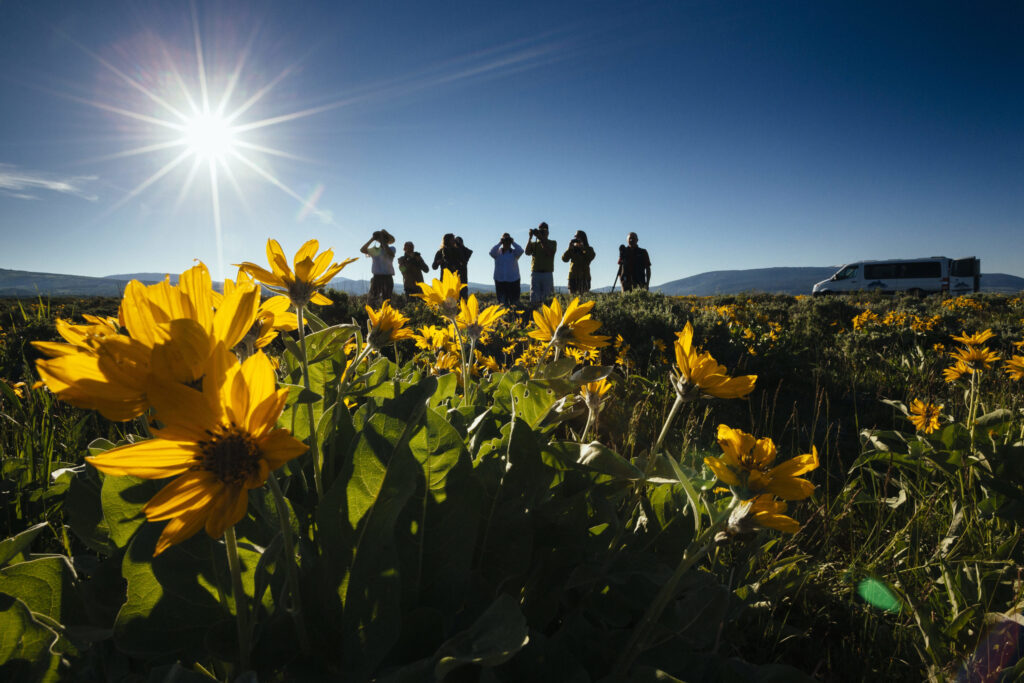Mary Oliver the poet implored us to listen to the stories that the sunflowers can tell us. “Don’t be afraid to ask them questions”, she writes, we can learn many things from those answers. What can students become when they listen to the sunflower’s stories? Scientists, artists, storytellers, the possibilities are endless. Using the sunflower as a lens through which to investigate, students learn to use their imagination, as they embark on an interdisciplinary journey.
Place-based education is at the heart of all we share here at TSS. For us, we approach PBE through the lens of the ecological, cultural, and economic perspectives of a community. We believe it’s an opportunity to connect learners and communities to increase student engagement, boost learning outcomes, impact communities and promote understanding of the world around us. This winter we’re inviting you to join us for a 7-week program so you can connect more deeply to Place-based learning. In addition to continuing your education, learning more about place-based education and earning credits, you will finish the course with a lesson or unit plan you can utilize with your students.
In this seven-week asynchronous course, you will explore the theory and application of Place-Based Education. Gain practical skills and tools to engage with your local community, guide students through inquiry and design processes, and build learner-centered, interdisciplinary experiences.
The course will be split into three sections:
- Part 1: Introduction to place-based education, goal-setting, and outcomes (weeks 1-2),
- Part 2: Place-Based Education principles and tools (weeks 3-5), and
- Part 3: Place-based lesson design and development (weeks 6-7)
You will create a place-based lesson or unit to implement in spring 2022, building upon a plan throughout the course. Each week will consist of asynchronous videos and readings followed by short assignments and discussions with other participants, including opportunities to get outside in your community. You will have the opportunity to personalize your learning experience through learner choice and interpretation of assignments. Anticipate spending 15-20 hours on course activities over the seven weeks and you could spend more as time and interest allow.

Here are a few highlights from the course:
Assignment Highlight: Uncovering stories of place inquiry: This foundational assignment focuses on community as classroom and local-to-global context. Before designing place-based experiences for students, teachers first build their own background knowledge on current events and historical contexts of their local communities.
Step 1: Investigate your place: You can download and print this scavenger hunt worksheet then head out into your community to investigate the ecology, economy, and culture of your place. Use these three strategies to gather information: interview a person by phone or social distance, read local newspapers or watch local news, access online resources like library archives and census data.
Step 2: Uncover your story: using one of the emergent themes, investigate a story from your place of a non-dominant group.
Step 3: Share your story in the discussion and respond to the following reflections prompt, then respond to 3 other posts:
- What is the story you uncovered?
- What guiding questions led you to finding and connecting with this story?
- How might you incorporate this activity or this particular story in “uncovering stories” of non-dominant groups in your community with students?
This has been an incredibly powerful activity for teachers in the past that has inspired long-term projects with students and to elevate the voices and stories of marginalized communities in the past or present in their place.

Assignment highlight: Consider the principles of interdisciplinary and Learner-centered as you analyze this delightful project by K-1 students. Here are the instructions:
Step 1: Watch this video “Questions for the Sunflowers,” a yearlong project by K-1 students at The College School in St. Louis. As you watch, take notes of the following:
- Evidence of students making their own choices, giving and receiving feedback, and taking ownership in their learning.
- Evidence of students learning and practicing skills across disciplines: art, science, math, writing, design and technology.
Step 2: Create a 2-4 minute video response including a few examples of the evidence you observed and a reflection of projects you have tried, opportunities, and possible challenges.
If you find yourself curious about PBE & how you can implement its principles into your teachings then this is the course for you!
Course Information:
Introduction to Place-based Education
- February 2 – March 23 | Virtual
- Register here by February 2 at 12 pm MST
- Fee $250
- Who is this for: Teachers & Undergraduates
Additional Information:
- One credit is available through the University of Wyoming (cost is $50), or one CEU is available through the Wyoming PTSB. Certificates of completion can be provided afterward.


